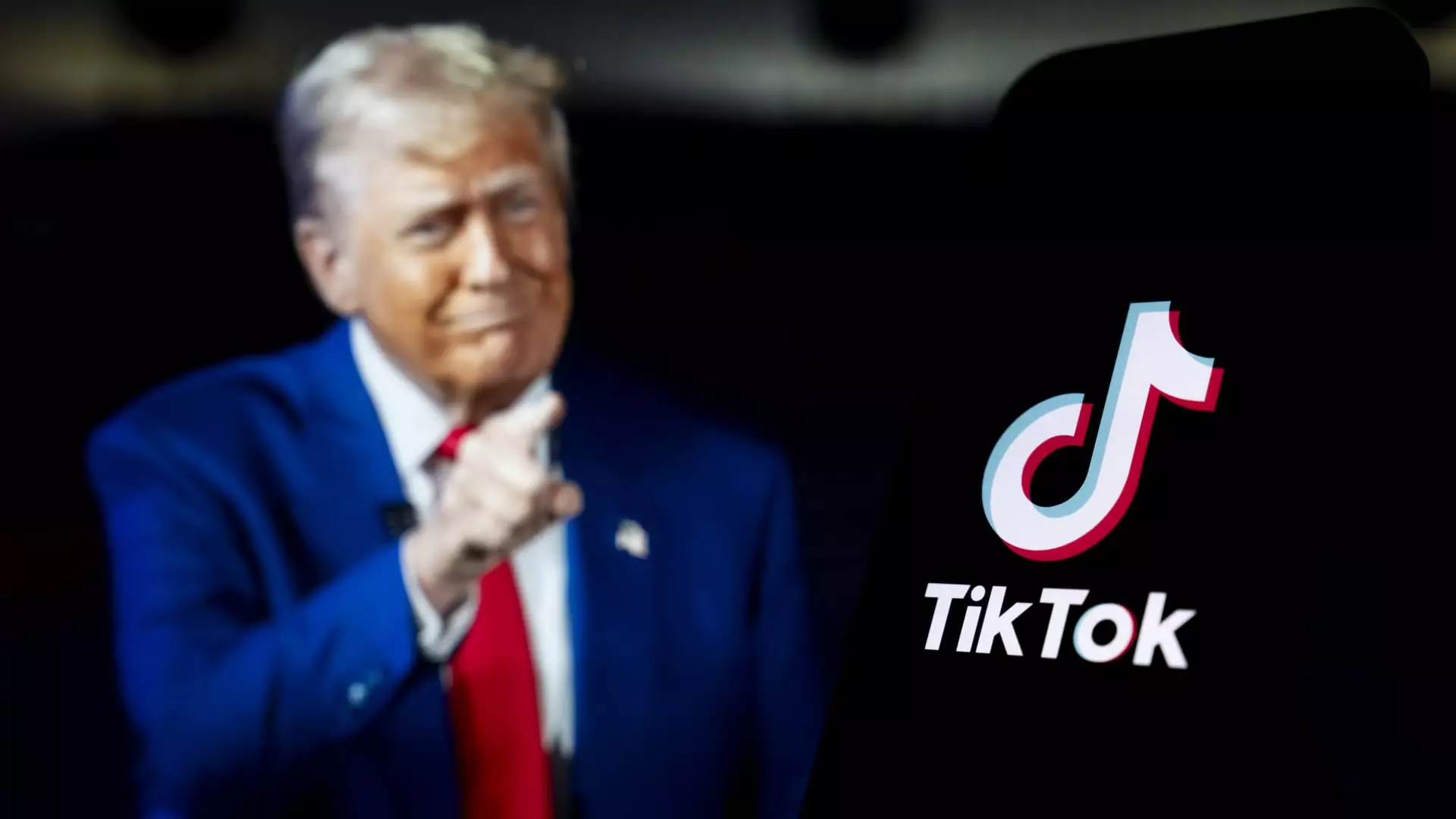In recent weeks, TikTok faced a critical juncture when it temporarily shut down in the United States following a significant legal maneuver. The shutdown was precipitated by a Supreme Court ruling that upheld legislation mandating the divestiture of ByteDance, the app’s Chinese parent company, or risk facing a complete ban in the U.S. This drastic measure clearly highlighted the geopolitical tensions surrounding the social media platform, prompting not just users but also creators to reconsider their engagement and establish contingency plans. However, just as quickly as it went offline, TikTok managed a noteworthy recovery, demonstrating its resilience in the face of adversity.
Data Insights: The Quick Bounce Back
According to Cloudflare Radar, which provides real-time insights into global internet traffic, TikTok experienced an initial drop in usage by approximately 85% during its temporary lapse in service. However, within a short period following its return, the platform regained nearly all of its traffic, sitting at just about 10% below pre-shutdown levels. Markedly, David Belson, head of data insight at Cloudflare, indicated that the app’s recovery trajectory has remained positive, especially considering the rather dramatic digital landscape surrounding social media today.
This data reveals crucial insights into user engagement and the social media dynamic. Users seem to have developed a robust attachment to TikTok, underscoring the platform’s uniquely compelling content and functionality. The fact that many creators and users returned swiftly after the ban suggests a deep-rooted dependence on TikTok for entertainment, connection, and even economic opportunities.
The context behind TikTok’s shutdown is as complex as the platform’s user base. The U.S. government’s requirements prompted Apple and Google to pull TikTok from their app stores, creating a domino effect that threatened the app’s accessibility and revenue streams. The legal uncertainty surrounding TikTok’s operations in the U.S. has been a longstanding concern, particularly since former President Donald Trump first threatened a ban in 2020.
It was interesting to observe how quickly the situation evolved when Trump signaled an extension on the enforcement of the law, a gesture that provided temporary relief for the platform. However, while TikTok’s re-launch was optimistic, the uncertainty of its long-term future in the U.S. market remains a cloud of worry for creators and investors alike. As creators like Dylan Lemay noted, this precarious scenario has led many to diversify their online presence, indicating that the threat of issues surrounding TikTok is very much alive.
In light of TikTok’s legal woes and temporary absence, many creators felt compelled to explore alternative platforms. Cloudflare’s data analysis revealed that the day of TikTok’s temporary ban saw a significant increase in traffic to rival platforms—pointing toward a potential shift in user behavior. RedNote, also known as Xiaohongshu in China, experienced a notable uptick as users sought out substitutes for their favorite app.
In a market characterized by ever-increasing competition, creators are feeling the pressure to establish a multi-platform presence. For instance, while some creators found success transitioning to platforms like YouTube and Instagram, others reported challenges in replicating their TikTok success elsewhere. The data starkly suggests that while TikTok has a distinctive niche characterized by its own community dynamics, many alternatives still struggle to recreate similar engagement levels.
Creators’ Perspectives on Future Viability
Many creators have voiced a mix of trepidation and optimism regarding TikTok’s future. Dylan Lemay, with a sizable following on TikTok, has taken initiative, proactively building an audience on YouTube, where he now enjoys reliable revenue streams. Similarly, Noah Glenn Carter’s experience serves as a cautionary tale; he has not seen a similar audience pick-up on Instagram and YouTube, indicating that simple cross-posting may not suffice for many creators.
Interestingly, some creators exhibit skepticism about the potential for TikTok’s permanent disappearance. Michael DiCostanzo articulated a sense of disbelief regarding the ongoing threats to TikTok. This dichotomy between confidence and uncertainty mirrors the broader sentiment in the creator community, illustrating the profound reliance on a platform that, while currently stable, remains under the shadows of regulatory pressures.
TikTok’s recent experience reflects the broader content creation landscape, where creators are continuously navigating a paradigm fluctuating under the influence of legal, technological, and competitive pressures. The app’s rapid resurgence in user engagement post-shutdown underscores its importance in the social media ecosystem. However, the lingering uncertainty over its ongoing viability could serve as a wake-up call for many creators to diversify and adapt, ensuring they are well-equipped to thrive regardless of the platform on which they create. As the digital landscape continues to evolve, so too must the strategies of its most vital participants—its creators.

